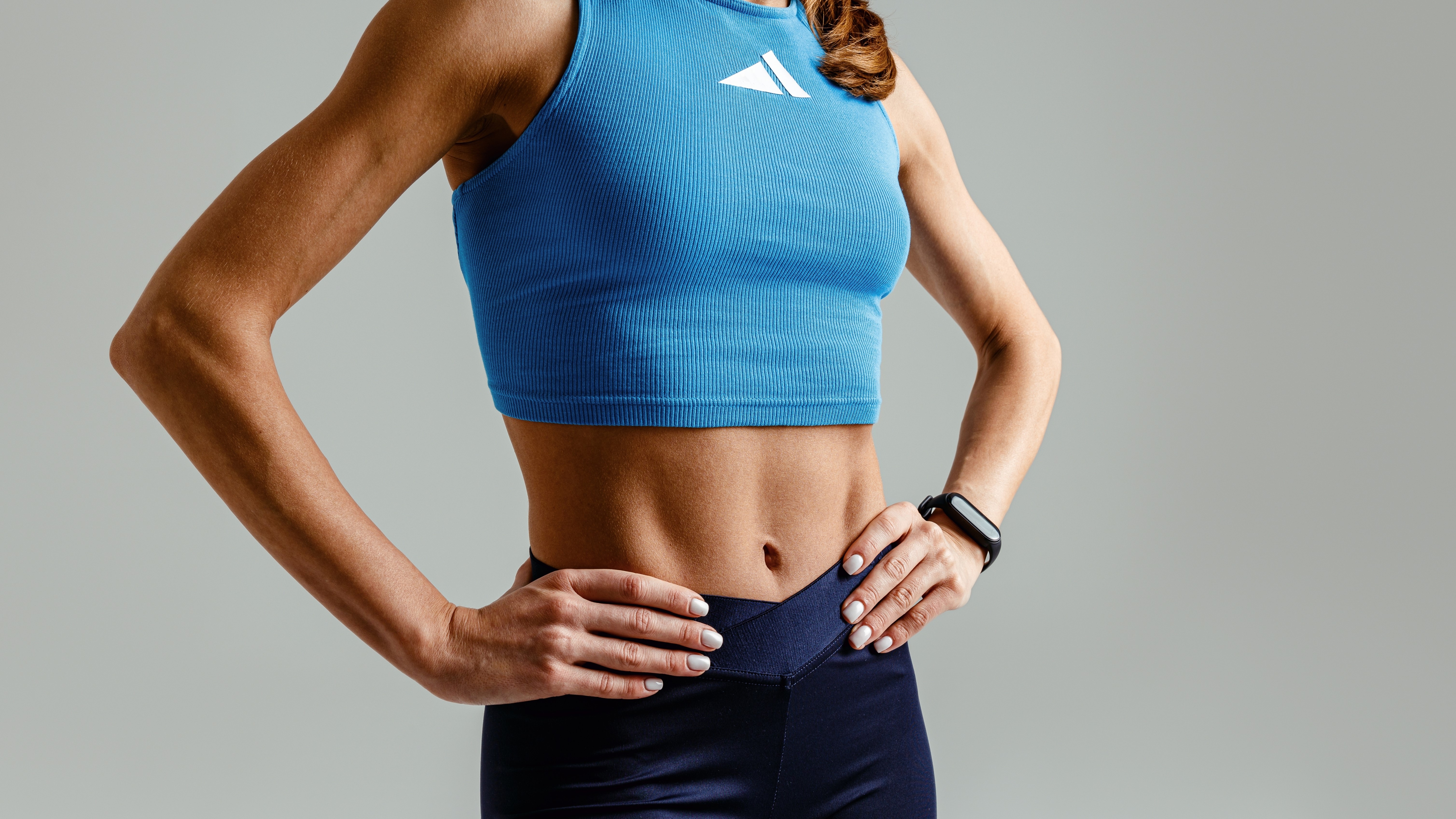
Anyone who has ever been on a quest to get washboard abs will know that getting results ain't easy. Your midsection, or core, is perhaps the most difficult area to sculpt and — for many — you have to be really committed to achieve something that resembles a six-pack.
Those determined enough to get the abs definition they want will have probably learned that it’s not just about doing endless crunches. That’s because there's more to our abdominals than meets the eye.
We speak to Pilates instructor and founder of Pilates PT, Hollie Grant, to uncover what exactly that is and why you should move beyond crunches and train all parts of the core to get the definition you want.
The core and the abs — more complex than you think
Contrary to popular belief, the “abs” and the core isn't the same thing. The core is actually made up of multiple abdominal muscles — all with their own important and unique roles.
"When we think of the abdominals, so many of us picture the classic swimwear models’ washboard six-pack, but what we are seeing in those images are only really one set of the ab muscles — the rectus abdominis,” says Grant.
These ab muscles include the internal and external obliques (responsible for the rotation and lateral flexion of the trunk), the transverse abdominis (responsible for the protection of our internal organs and stabilization of the trunk), and then the rectus abdominis (responsible for flexion of the trunk).
So when we think about training the “abs”, it might help to not see them as just one muscle, but be aware that it’s a group of different muscles that have to be targeted through different exercises.
While the rectus abdominis is not the only muscle, it is the most major one involved — especially when we refer to both upper and lower abs. “It goes from the ribcage down to the pubic bone and it’s important that the length of it is targeted as many people simply work the upper portion,” explains Grant. “And so, to target the lower abs we need to think of the core as a whole.”
While the upper abs are engaged in your more bog-standard abs exercises like crunches — which generally involve chest-to-pelvis movements — the lower abs are targeted in movements like leg raises, where the pelvis moves towards the chest.
Despite widespread opinion, training the lower abs area is actually the most important of the two due to the difficulty in isolating the area. It’s also a common site for fat accumulation, making it harder to tone and define.
Focusing on the lower abs is also said to improve core stability and pelvic control, which are crucial for overall strength, posture, and injury prevention in various physical activities and sports.
5 exercises for targeting the lower abs
Given there are multiple abdominal muscles in the core all targeted with different movements, it’s important when training the abdominals that we move in multiple planes, for example, flexion, lateral flexion, and rotation.
Here are five exercises, according to Grant, which cover these movements, and therefore can help to target the lower ab area (but will also benefit the core as a whole).
1. Deep core activation
“This is a great way to target the transverse abdominis, which has the effect of drawing in the abdominal wall (making it flatter) and cinching in the waist, which will provide stability to the trunk,” Grant says.
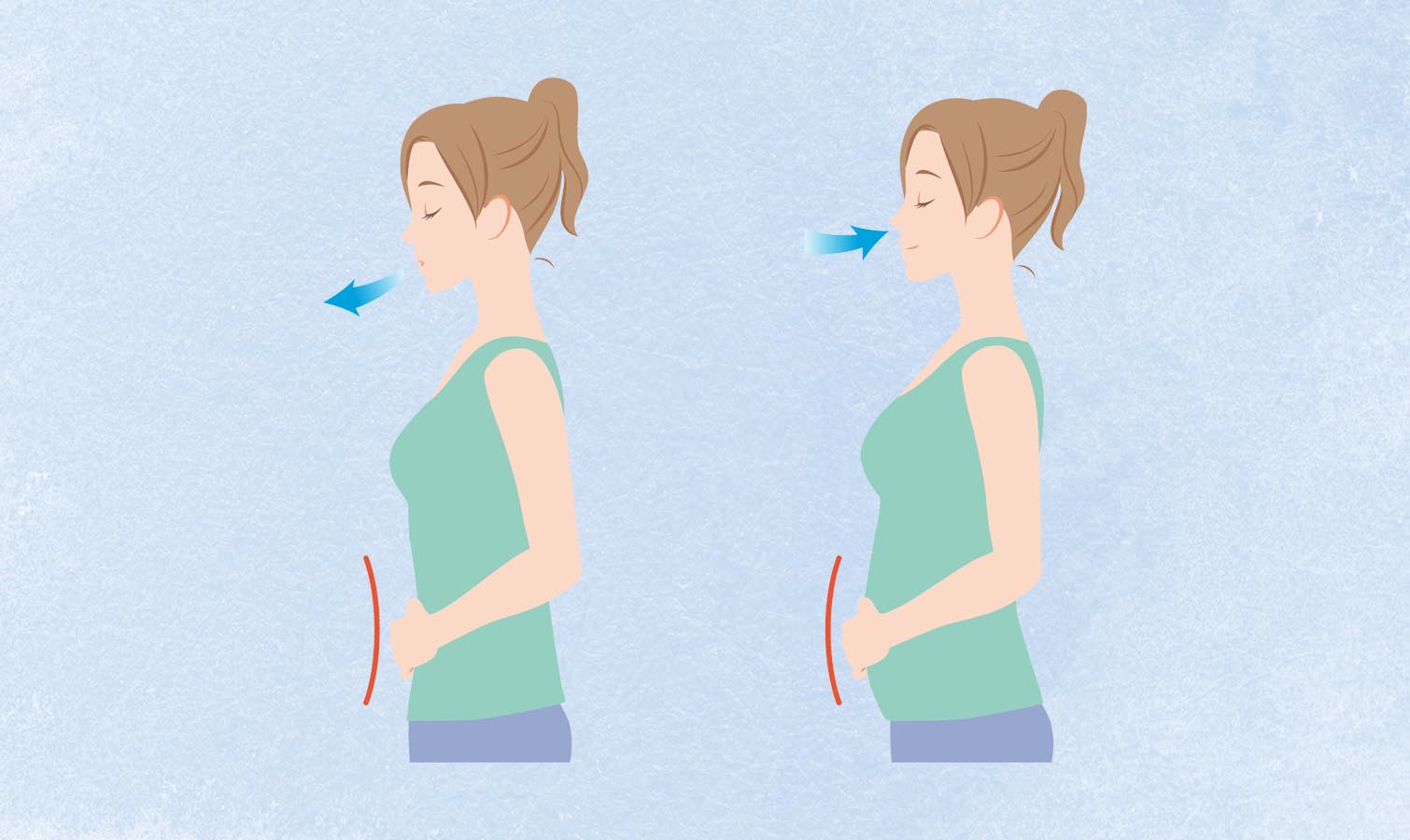
How to do it:
- Step 1: Start in a comfortable standing position with your hands resting on your tummy near your belly button.
- Step 2: Take a big inhale, and as you exhale imagine a belt being tightened around your waist, or a corset being tightened. You should feel that underneath your hands your tummy draws in.
- Step 3: Inhale to release
- You should repeat this one 6-8 times per set.
2. Single knee lifts
“Single knee lifts are a great way to target the deep stabilizers of the core, as the challenge is not allowing the spine or pelvis to move as the legs move,” says Grant.
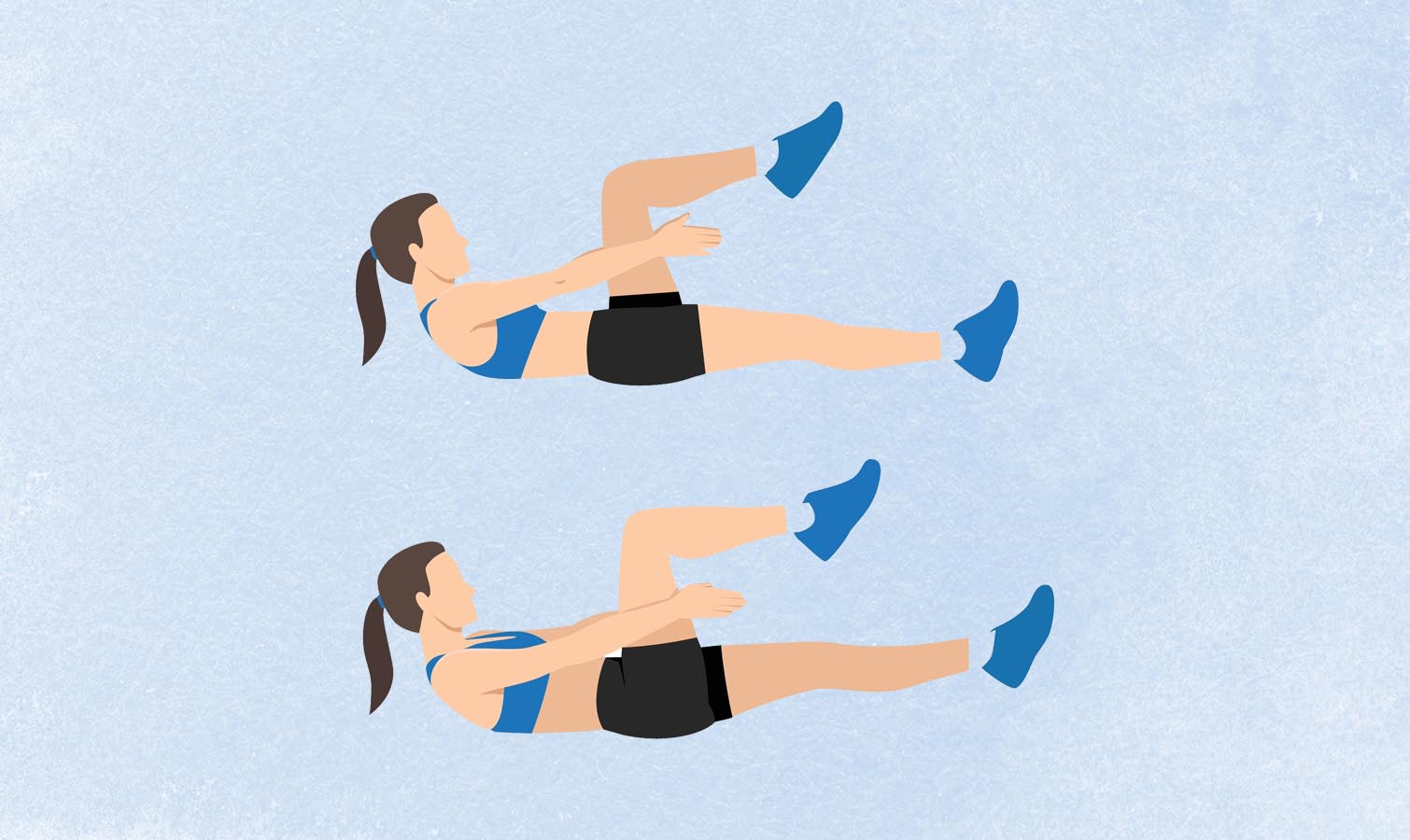
How to do it:
- Step 1: Start by lying down on your back, knees bent, and feet flat on the floor.
- Step 2: Aim to get your lower back into a neutral position — this means that there is only a gentle curve in the spine and you are not forcing the lower back into the floor.
- Step 3: Inhale, and as you exhale slowly float one leg up to the tabletop position (knee and hip at 90 degrees).
- Step 4: Inhale to lower the foot back down.
- Step 5: Exhale to repeat on the other leg. Inhale to release.
- Repeat for 30-60 seconds. To make this harder, lift both legs at the same time. Do not allow the lower back to arch away from the floor — keep it stable.
3. Single leg extensions
“This exercise is a great way to target the stabilizers and builds strength and mobility into the hip flexors which can reduce the chances of you having a pelvis that tilts forwards (anterior tilt), which makes it harder for the lower abs to fire,” explains Grant.
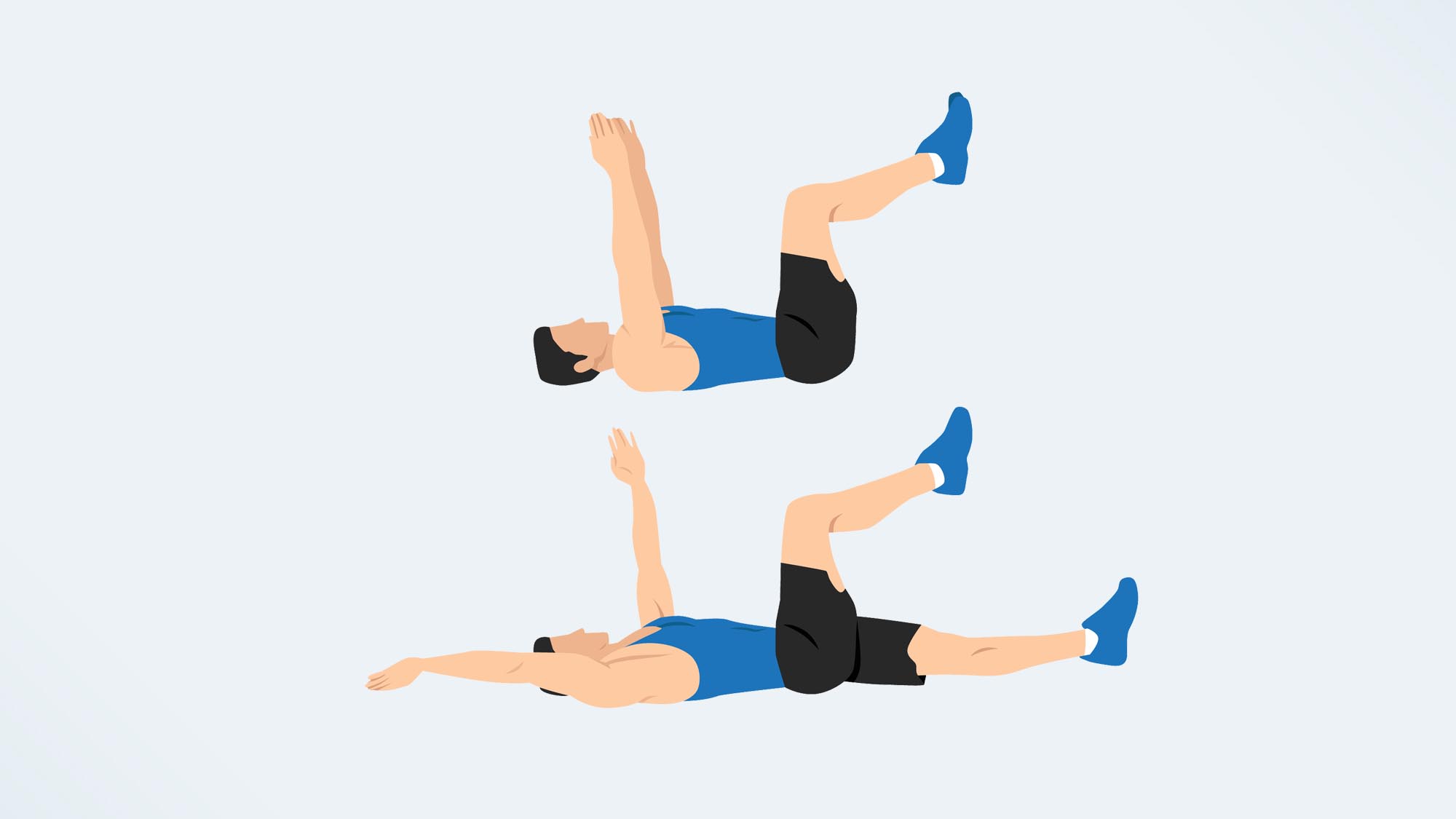
How to do it:
- Step 1: Start by lying down on your back, knees up in a tabletop position.
- Step 2: Aim to get your lower back into a neutral position – this means that there is only a gentle curve in the spine and you are not forcing the lower back into the floor.
- Step 3: Inhale, and as you exhale start to extend one of your legs towards the end of your mat, taking it as low as you can without arching the lower back away from the floor.
- Step 4: Inhale to return and exhale to repeat with the other leg.
Repeat for 30-60 seconds.
“The aim here is to keep the pelvis and lower back as still as possible, whilst taking the leg long and low,” Grant adds.
4. Seated side bends
“Seated side bends will target the obliques whilst also promoting the mobility of the spine, mainly in lateral flexion,” Grant says.
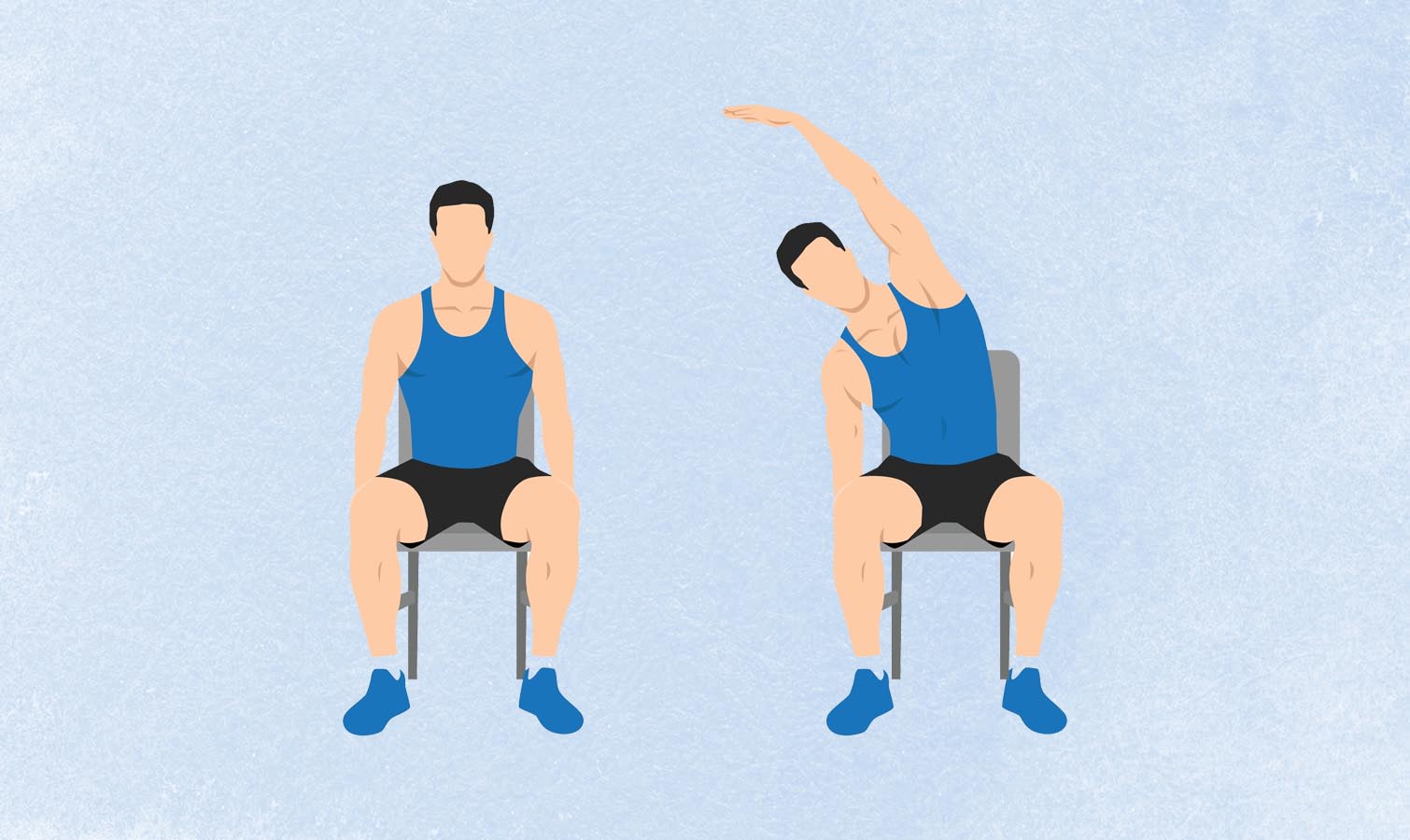
How to do it:
- Step 1: Start in seated, with the legs in a position most comfortable for you (crossed, extended, knees bent etc).
- Step 2: Bring your fingers to your temples and sit in as neutral a position as possible.
- Step 3: Inhale and begin to flex your spine to the left-hand side (bend to the side) but keep both sit bones on the floor.
- Step 4: The pelvis won’t have moved, but the spine will have laterally flexed.
- Step 5: Exhale to pull your spine back up to the start position.
- Repeat on the other side and continue for 30-60 seconds. And if you want to make it harder, extend the arms overhead therefore making you heavier to pull back up.
5. Oblique Rotations
“As the leg extends you are challenging the lower abdominals and your core stability, while rotating upwards will fire the obliques,” explains Grant.
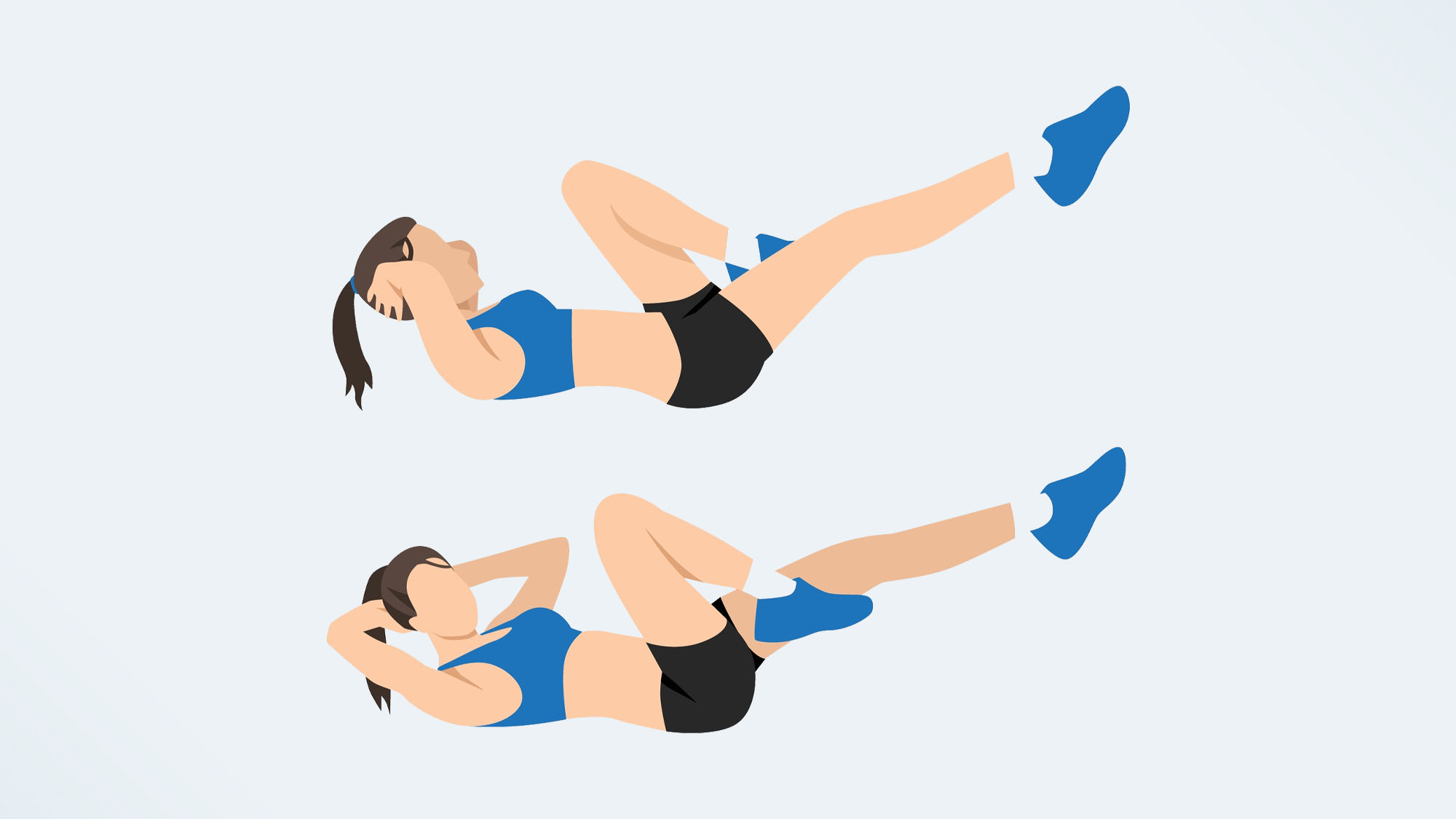
How to do it:
- Step 1: Start by lying down on your back, knees up in a tabletop position, fingers to temples and the lower back in a neutral position.
- Step 2: Inhale, and as you exhale extend your left leg out towards the end of your mat (as low as you can keep the curve in your lower back stable).
- Step 3: While doing this lift the head and shoulders off the mat and rotate towards the right knee, as though you are trying to get your left lowest rib to meet your right hip bone.
- Step 4: Inhale to release back to start and then exhale to repeat on the other side. Continue for 30-60 seconds.
How often do I need to do these exercises?
Incorporating these exercises into your routine can lead to significant improvements in core strength, particularly in the lower abdominal area. However, Grant adds that it’s important when training the lower abs in this way, that you protect the integrity of the lower back. “Try to avoid your lower back arching and extending aggressively as you do these exercises, and this will also help prevent cheating,” she says.
When it comes to frequency, she recommends training the lower abs 2-3 times per week, which allows for adequate muscle recovery and growth. However, it’s important to note that achieving a toned and strong lower abdomen isn't just about exercise — it's also about maintaining a balanced diet and overall healthy lifestyle. Read more about how to calculate your body fat percentage, and why it matters here.







